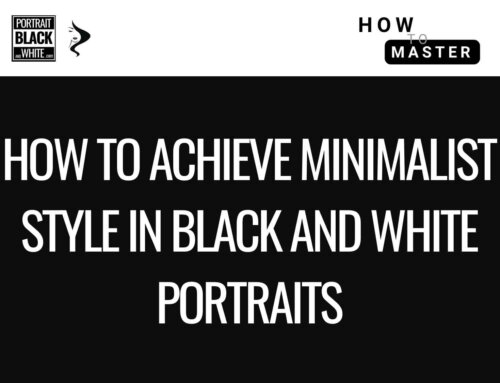Color photography handles diversity in skin tones through hues—warmth, saturation, and subtle color casts help differentiate between lighter and darker complexions. In black and white portraiture, all that disappears. Every skin tone is translated into shades of gray, which can sometimes flatten differences or exaggerate contrast in ways that don’t reflect the subject’s real presence.
Mastering how to photograph and edit different skin tones in monochrome is crucial, not only for technical quality but also for respectful and authentic representation.
Why Skin Tones Behave Differently in Black and White
- Reflectivity: Lighter skin reflects more light, often dominating highlights if exposure isn’t managed.
- Absorption: Darker skin absorbs more, pushing midtones lower and sometimes risking loss of detail in shadows.
- Texture visibility: Fine details (pores, lines) appear more prominent in lighter skin when shadows deepen; darker skin reveals micro-highlights strongly if over-sharpened.
- Channel sensitivity: The way reds, yellows, and blues convert to gray during monochrome conversion changes how each skin tone is represented.
The key is to preserve nuance: ensuring that every subject, regardless of skin tone, retains texture, shape, and emotional impact.
Step 1 – Expose with Intent
The most common error is exposing all skin tones the same way. In monochrome, this creates imbalance: light skin may blow out, dark skin may sink into shadow.
- For lighter skin tones: Expose slightly under the meter reading to protect highlights. Subtle gradations in cheekbones or forehead are easily lost if whites clip.
- For darker skin tones: Expose slightly above the meter reading to preserve shadow detail. The richness of darker skin lies in delicate midtones, not in crushed blacks.
- Mixed skin tones in one frame: Expose for the darkest skin, then lift highlights selectively in post. This prevents loss of shadow detail that can’t be recovered later.
Correct exposure is less about equality and more about fairness—giving each complexion its tonal space.
Step 2 – Shape with Light Quality
Different skin tones respond distinctly to hard and soft light.
- Lighter skin tones: Hard light can create blown highlights and unflattering transitions. Soft, broad sources (large windows, diffusers) preserve smooth gradations.
- Darker skin tones: Hard light can emphasize shape beautifully, carving contours while still leaving midtone texture. A rim light or edge highlight often makes darker skin glow in monochrome.
- For all tones: Directional light works best. Flat, front-facing light erases texture across the spectrum, making portraits feel lifeless.
Shaping with light ensures that texture and dimensionality are honored rather than hidden.
Step 3 – Control Conversion Channels
When converting to black and white, channels matter more than sliders.
- Red/orange channel: Controls most skin rendering. Lightening reds makes light skin luminous; darkening reds makes freckles, lips, or blemishes stand out.
- Yellow channel: Important for midtones, especially in warmer skin tones. Adjusting it subtly can prevent either washed-out or muddy results.
- Blue channel: Can deepen cooler shadows but risks exaggerating veins or imperfections if pulled too far.
By fine-tuning channel mixes, you can emphasize texture and shape differently for each complexion without forcing a uniform “gray.”
Step 4 – Editing for Fair Representation
The goal in editing is not to equalize skin tones but to bring out what makes each one distinct.
- Preserve texture. Over-smoothing lighter skin removes authenticity; over-sharpening darker skin creates harsh highlights. Adjust locally.
- Balance midtones. Lift midtones gently in darker skin tones to avoid losing detail. Subtly lower midtones in lighter skin to preserve shape and prevent a washed-out look.
- Selective dodge & burn. Accentuate contours differently: jawlines and cheekbones for darker tones, forehead and cheek transitions for lighter tones.
- Avoid uniform contrast. Each skin tone benefits from tailored adjustments—what makes one portrait glow may flatten another.
Authenticity comes from respecting the individuality of each subject’s complexion.
Step 5 – Working with Mixed Skin Tones
Group portraits or interracial sessions can be particularly challenging in monochrome.
- Lighting balance: Use soft, even light to prevent extremes. Avoid setups that create glowing hotspots on lighter skin while leaving darker skin lost in shadow.
- Editing strategy: Expose and process for darker skin, then refine lighter tones locally. It’s easier to brighten highlights selectively than to recover lost shadow information.
- Background choice: Ensure background tone separates from all skin tones, not just one. This keeps every subject equally legible.
Fair representation in mixed-skin portraits means each subject is visible, detailed, and respected in the final frame.
Common Pitfalls to Avoid
- Overcompensating with contrast: Pushing contrast globally may work for darker skin but blows out lighter skin detail.
- Uniform presets: Applying the same preset across different complexions flattens individuality.
- Ignoring catchlights: In darker tones, eyes can disappear if catchlights aren’t protected. Always prioritize eye highlights.
- Excessive noise reduction: Removing texture disproportionately affects darker skin, where micro-reflections create richness.
Avoiding these mistakes is as important as the positive steps.
Practical Exercises
- Single subject, two exposures: Photograph the same subject one stop under and one stop over. Convert to black and white and observe how detail changes.
- Mixed skin tones portrait: Place two subjects with different complexions side by side under the same light. Adjust exposure and conversion to balance both fairly.
- Channel isolation test: Convert the same portrait three times—favoring red, yellow, and blue channels each time. Study how skin rendering changes.
- Local dodge & burn practice: Work only on midtones around facial contours. Notice how small adjustments create dimension without altering global contrast.
These exercises build sensitivity to subtle tonal differences.
Final Thought
Photographing different skin tones in black and white is not about making everyone look the same—it is about ensuring everyone looks like themselves, with dignity and detail preserved. By exposing carefully, shaping light intentionally, and editing with sensitivity, portraits become inclusive and truthful.
In monochrome, skin tones are not colors; they are tones, textures, and light relationships. Mastering them means respecting individuality while using the expressive power of black and white to highlight the humanity all subjects share.




Scrivi un commento